Mikayla Rodin, MA, AMFT, of the OCD Center of Los Angeles, discusses a subtype of OCD called Contamination OCD, as well as sharing what the symptoms and treatment may look like for someone experiencing this condition.
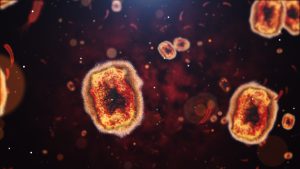
Contamination is a subtype category of Obsessive-Compulsive Disorder (OCD). It is defined as the fear of becoming “contaminated.” This contamination can occur in numerous ways but is typically seen when an individual has obsessive fears circulating around sticky residues, bacteria-loaded surfaces, and dirt…to name a few. The general rule of thumb is that any obsession where you feel the need to compulsively wash your hands, clean yourself or the space around you, or keep everything perfectly sterile, would fall under this subgroup of OCD. OCD does not always categorize simply, however. The list goes on and on and can be extensive for an individual suffering from Contamination OCD.
Common Contamination Obsessions and Compulsions
Examples of Common Contamination Obsessions:
- Fear of germs
- Fear of dirt and sticky residues
- Fear of bodily secretions
- Concerns about personal hygiene
- Concerns about physical appearance
- Fear of getting sick
- Fear over exposing others to illnesses
- Concerns about environmental contaminants
Examples of Common Contamination Compulsions:
- Excessive Hand Washing
- Excessive Showering
- Avoiding certain places or touching certain things
- Excessive cleaning and disinfecting
- Changing clothes obsessively for clean ones
- Throwing ‘dirty’ things out
- Not eating certain foods due to ‘contamination’
Rinse and Repeat
For people suffering from Contamination OCD, it seems most of them go through a phase where they need to wash their hands to decontaminate. This compulsion can be brought on by the obsession that your hands are dirty because you touched a surface that wasn’t “clean.” OCD never keeps it simple though. I have found that washing your hands one time doesn’t always do the trick. Some people suffering from this disorder need to do things in certain multiples or until it’s done “just right.” From my own experience, if I touched something I felt was contaminated I had to wash my hands using the soap pump twice. Or if I felt something got on my nails, then I would have to look over my nails after washing them. My nails would have to be visually checked three times. I would start from right to left and then left to right. That would only count as one perfect check in my head. If I didn’t count right, which happens often when you’re stressed and try to do math, I would start over with the handwashing. In OCD terms, this is checking if something is “Just Right.” This is commonly seen in individuals who need symmetry in their actions and evenness in numbers. It never seems so bad until you realize how dry your hands are and you start researching Allure’s 2024 Best Hand Creams. There are also those who have to convince themselves to only take one shower a day and not ten. The first time they hop in the shower they may find that they didn’t use the right amount of shampoo…so what if some hair product was still in their hair? They will want to hop back in the shower and try to do it the right way, which is oh so difficult with OCD. It can take ten more shower rotations until they feel clean enough. While working with patients who suffer from this line of OCD, another common compulsion/equalizer is doing laundry. Think about these questions, “How often are you doing laundry? How much soap are you using? Can you use soap with dyes and synthetic fillings? Do you rewash clothes? How long are you wearing your clothes until you must wash them?” If your answer to any of these questions was more complicated than it was intended to be, you might have some compulsive behavior when doing your laundry. This is a common outlet for those wanting to decontaminate obsessively. One spin cycle makes your head spin. Contamination OCD can make everyday life functions such as cleaning, eating, and showering feel so time-consuming and anxiety provoking.
Contamination Can Be Emotional
Emotional contamination is a lesser talked about subcategory of OCD. However, just because it isn’t talked about as much doesn’t mean it is rarer to have. Some forms of OCD used to be labeled as “Pure O.” This simply means that the OCD is internal and is not acted on externally. People with this type of OCD are much more likely to be doing mental ritualization. Mental ritualization is doing the compulsion in one’s head/mind. For example, counting how many times you look over at your phone screen before you can look away because something on the screen triggered you. Emotional contamination is more focused on the idea that a person, place, or thing that comes into contact with you can somehow “contaminate” you. For example, a person might have a fear of petting a dog. They might walk into a house that has a dog that is outside. If they have emotional contamination, they will race home to take a shower and wash their hands assuming they must have at least gotten dog fur on them. They will want to erase it away and make it just right again. Contamination emotionally can feel a lot like association. For example, seeing a number that is ‘bad luck’ can trigger anxiety. An individual may not want that number in their presence for fear of it contaminating them and will avoid even glancing at scoreboards, clocks, homework assignments, etc. Emotional contamination is so tricky because there are not many overt, or observational/external, behaviors to go with it. These people are usually the silent sufferers, the avoiders, or the ones who always look lost in thought.
The Effects of the Pandemic on Those Suffering from Contamination OCD
The 2019 Covid Pandemic was life changing for most people. However, those with Contamination OCD it was either extremely validating or added so much extra anxiety to their lives. A study completed by The Journal of Anxiety Disorders (Wheaton et al., 2021) found that OCD symptoms that worsened significantly during the pandemic were linked to contamination and responsibility for harm symptoms. This was in comparison to symptoms such as having issues with taboo intrusive thoughts and symmetry, ‘just right’ thinking. The main issue with the pandemic for those suffering from OCD is that it confirmed that their worst fears were possible. It showed that the world can be shut down due to an illness, that family members and loved ones can be labeled high-risk and need to be treated with caution, that they were barred from being with loved ones while they were in the hospital, and that they can find themselves becoming incredibly sick as well. Due to this, there seems to be a high increase in Contamination OCD sufferers from this worldwide pandemic. This opened a huge doorway for new compulsions to arise for OCD sufferers such as mask wearing long after the height of Covid, disinfecting tables at restaurants and airplane seats before being able to sit down comfortably, and always keeping a high alcohol percentage sanitizer on your person. Not to mention, the high increase of those suffering from Health Anxiety simultaneously. It is hard to determine when things have gone past being ’safe and cautious’ to being obsessive and compulsive. Especially, when the pandemic is something our generation never experienced beforehand. With things beginning to wind down globally, it is a good time to check in with yourself and think about how you were with the world around you pre-Covid. Were you always sanitizing? Could you pump gas into your own car and be okay touching the machine? Did you go out to eat regularly? Were you petrified of getting sick or simply inconvenienced by it? Individuals who never had an OCD thought linger, probably went back to their normal ways of living. The world had to continue forward. Children went back to school, work offices opened back up, flights took off on their normal schedules, and restaurants went back to regular seating arrangements. OCD sufferers didn’t bounce back all that easily, and maybe don’t even recognize that they are still living life as if they are in the height of a pandemic. Everything they feared did come true to an extent, there is no arguing that. But how does one suffering from Contamination OCD learn to accept the uncertainties and tolerate these feelings? The next section will discuss treatment techniques that have been proven successful by fellow OCD sufferers and can make such a difference in how one experiences daily life.
How to Treat Contamination OCD
Those suffering from any form of Obsessive-Compulsive Disorder have benefitted time and time again from treatments focusing on Cognitive Behavioral Therapy (CBT) and Exposure Response Prevention (ERP) with a therapist they trust. Trusting the therapist is super important because this form of treatment can be scary to overcome, and many exposures need to be done in a comfortable environment. CBT focuses on retraining the brain to respond differently, more proactively, to the intrusive thoughts an individual experiences. With the combination of ERP, the client and therapist can begin noticing differences in treatment. A typical route of treatment with the incorporation of CBT and ERP could look like this for example:
- Psychoeducation: Learning more about OCD and the science behind ERP
- Discussing different tools to help with treatment and beginning to implement them into daily practice (learning how to track and record thoughts and urges, being able to scale the level of anxiety associated with a trigger)
- Mindfulness Practices (Tools for when you need to be brought back to the present moment)
- Creating hierarchies with your therapist and scaling the anxiety at each level
- Charting your thoughts and urges and scaling how anxious you feel
- Thinking of alternative thoughts to combat the disruptive ones
- Beginning to tackle the hierarchy from least anxiety provoking to most
- Teaming up with your therapist to create imaginal exposures and in-vivo exposures
It is important to keep in mind that this is just a suggested outline and that therapists may pull from this and reorganize the structure based on the client. Every individual is different, and a good therapist will be mindful of that and try to make treatment specific to what works best for their client. The tools and techniques are the most important part of any treatment and knowing how to properly use them. This will help the client be able to sit with their uncomfortable thoughts and learn not to lean into the compulsions that typically follow. Compulsions and obsessions are treated relatively similarly no matter what the origin of the fear is. If you have Contamination OCD, your treatment will follow similar routes with a focus on the fear itself. For example, if you have a fear of touching a dirty surface, treatment will be focused on helping you become comfortable with the possibility that the surface was in fact dirty and there is nothing you can do to equalize it out or undo it. It is the same with those who have Harm OCD. We are working on helping them accept the thoughts revolving around hurting a loved one for instance. The focus is not to erase it, but to acknowledge that it is present and that it isn’t based on our real feelings or notions. OCD is tricky and clever, but not impossible to put in the backseat of our brains.
Correlation Does Not Equal Contamination
It makes logical sense that no one truly wants to be dealing with ‘dirty’ residues or substances, or even risk getting sick. However, remember that just because something such as a surface might be contaminated does not mean it will be your downfall and make you seriously ill. Our OCD would like to think otherwise, and that is okay. Let your OCD think otherwise. You don’t need to rationalize with your OCD, that only feeds into it. Our job is to be mindful of our own mental health and realize when a thought is not a healthy one. Any thought that takes up too much brain space and causes an influx of anxiety, IS NOT A HEALTHY ONE. It is one that we need to be mindful of and realize it has a decent chance of catching us off guard when it does arise. With the right therapist, treatment, and mindset you can catch these thoughts quickly and be able to sit with them until they no longer hold any power over your well-being. OCD is not necessarily curable, but it is treatable.
References:
Dennis, D., McGlinchey, E., & Wheaton, M. G. (2023, July). The perceived long-term impact of COVID-19 on OCD symptomology. Journal of obsessive-compulsive and related disorders. https://www.ncbi.nlm.nih.gov/pmc/articles/PMC10239286/#:~:text=One%20study%20found%20that%20worsening,to%20the%20COVID%2D19%20virus.
• Mikayla Rodin, MA, AMFT, is a psychotherapist at the OCD Center of Los Angeles, a private, outpatient clinic specializing in Cognitive-Behavioral Therapy (CBT) for the treatment of Obsessive-Compulsive Disorder (OCD) and related anxiety based conditions. In addition to individual therapy, the center offers ten weekly therapy groups, as well as online therapy, telephone therapy, and intensive outpatient treatment. To contact the OCD Center of Los Angeles, click here.


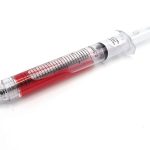

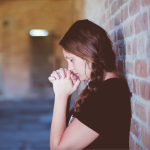

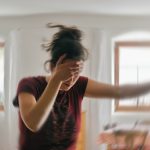
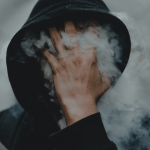

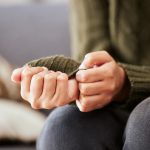



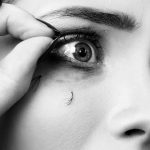



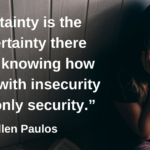

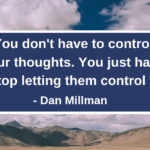

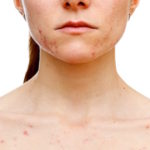

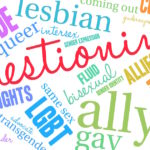
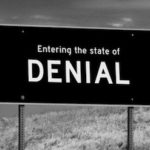

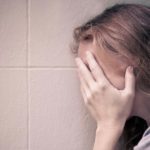

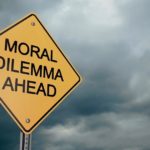
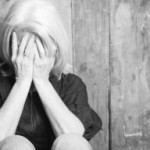


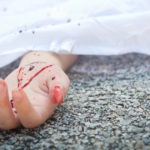



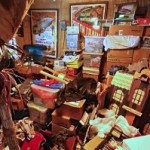






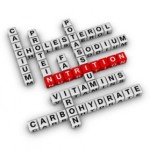


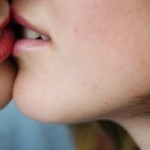
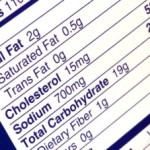



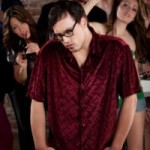

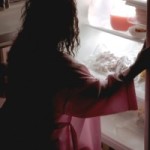




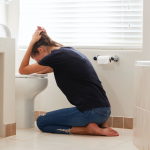
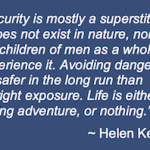
One Comment
Thank you for the article, and I have the “just right” obsession at the grocery store, where when I remove an item, I must check to make sure nothing is out of place or contaminated with my hands. It is a form of suffering. I have had OCD checking for 60 years, and I am learning with ERP to cope.